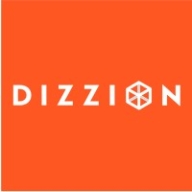

Dizzion and Azure Virtual Desktop are competitors in the virtual desktop infrastructure space. Azure Virtual Desktop often has the upper hand due to its comprehensive features and integration with Microsoft tools.
Features: Dizzion offers secure desktop management, compliance-focused solutions for regulated industries, and straightforward pricing. Azure Virtual Desktop provides auto-scaling, hybrid work capabilities with Microsoft 365, and cost-effective virtual machines with shutdown options to minimize expenses.
Room for Improvement: Dizzion could enhance integration with broader ecosystems, improve scalability, and expand feature sets for larger enterprises. Azure Virtual Desktop might focus on simplifying initial configurations, lowering complexity for non-technical teams, and offering more competitive pricing options for smaller businesses.
Ease of Deployment and Customer Service: Dizzion is praised for its simple deployment model and hands-on customer service, useful for teams needing direct assistance. Azure Virtual Desktop involves more intricate setup procedures but provides comprehensive documentation and resources for informed users.
Pricing and ROI: Dizzion's straightforward pricing is appealing for cost management, potentially offering quick ROI. Azure Virtual Desktop requires navigating a complex pricing structure, but its ROI can be justified through enhanced productivity when fully utilizing its features.


Azure Virtual Desktop enables scalable remote work with integration to Microsoft 365, enhancing collaboration and productivity. It offers secure access to desktops from anywhere, supported by features such as automation tools and robust security measures.
Azure Virtual Desktop is a powerful cloud-based platform facilitating remote work, disaster recovery, and secure access to applications. It supports multiple users, allowing efficient management of host pools and provides flexibility for consultants and contractors. Challenges include unpredictable costs and the need for improved scalability, better application delivery, and seamless transition from Windows 10 to 11. While it boosts hybrid work capabilities, further enhancements in intelligent scaling and integration with proxies are needed. Organizations use it for development, ensuring data security and management simplicity, but seek dynamic auto-scaling and cost optimization.
What are the key features of Azure Virtual Desktop?Azure Virtual Desktop is widely implemented across industries like technology, consulting, and finance. Firms utilize it for secure remote work, offering access to applications and data while maintaining stringent security protocols. It is particularly beneficial in scenarios requiring disaster recovery and seamless multi-session capabilities for globally dispersed teams.
Dizzion provides cloud-delivered desktops designed to meet the needs of modern businesses. It offers a secure, flexible environment for managing virtual workloads, enhancing productivity, and ensuring seamless user experiences.
Specializing in virtual desktop infrastructure, Dizzion ensures organizations can securely deploy virtual desktops accessible from any device, enhancing remote work capabilities. This approach allows businesses to maintain operational continuity while securing sensitive data and ensuring compliance with industry standards. By integrating with existing workflows, Dizzion supports enhanced productivity and scalability, leading to a more responsive IT environment.
What are the most important features of Dizzion?Dizzion is implemented across industries like finance, healthcare, and call centers, allowing organizations to maintain security and compliance while enabling flexible, remote work solutions. Each industry benefits from tailored features that address unique compliance and security challenges, ensuring reliable performance.
We monitor all Virtual Desktop Infrastructure (VDI) reviews to prevent fraudulent reviews and keep review quality high. We do not post reviews by company employees or direct competitors. We validate each review for authenticity via cross-reference with LinkedIn, and personal follow-up with the reviewer when necessary.